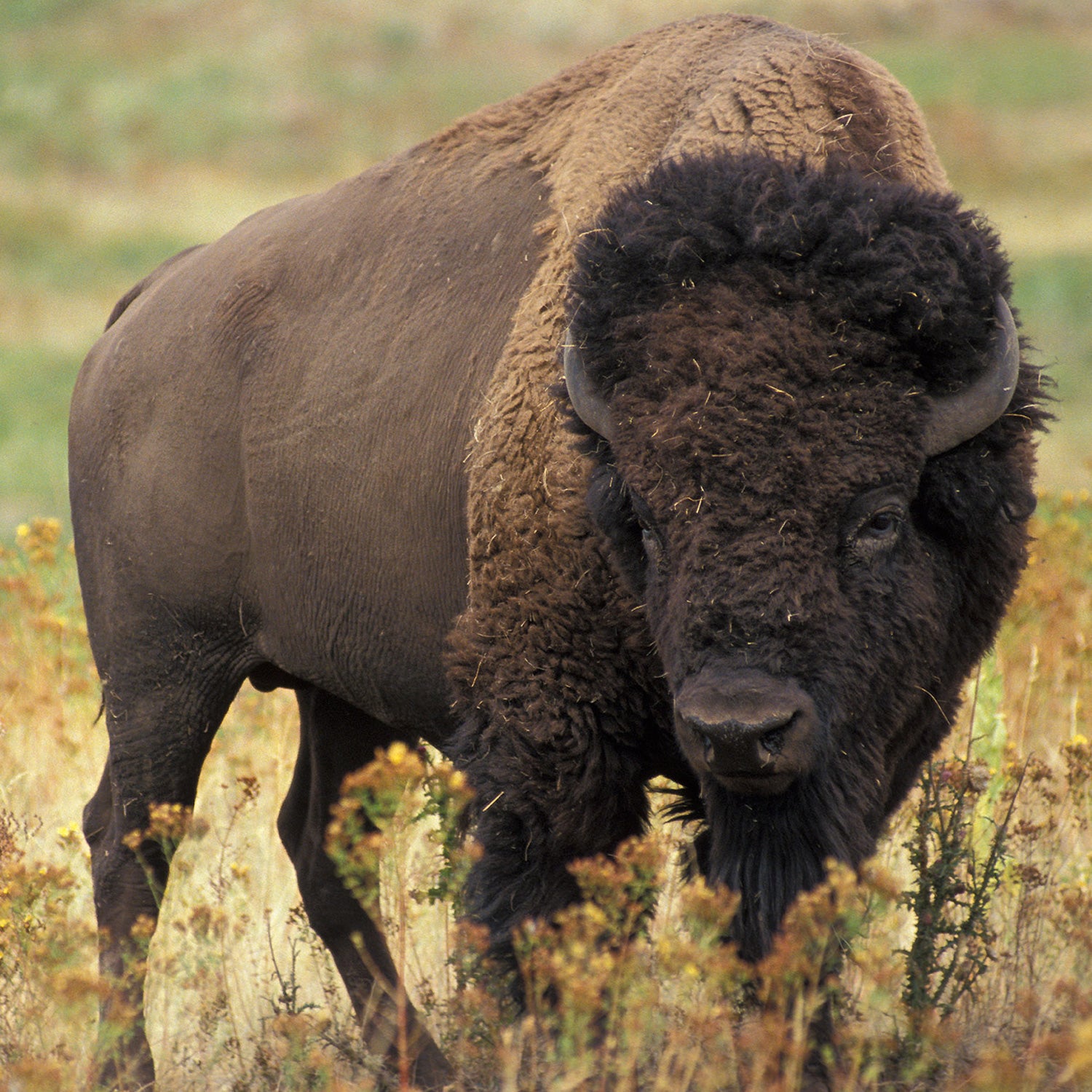With President Obama’s signature on the this week, the iconic species Bison bison, better known as the buffalo, has been declared a “national mammal,” joining the bald eagle, the rose, and the oak as quintessential American symbols.
The groups that pushed the legislation–notably the National Bison Association and the Wildlife Conservation Society– “the resurgence of bison as an important part of the American environment, diet, and an emerging part of the agricultural economy.” We are told by Wildlife Conservation Society bison program coordinator Keith Aune that passage of the bill “signals the beginning of a grand American adventure to carry out ecological, economic and cultural restoration of American bison into the future.”
Really? If we like our bison domesticated, held behind fences, and commodified for the dinner plate, then there is much to celebrate: Of the approximately 500,000 buffalo in this country, the majority are privately owned, have been interbred with cattle, and are raised for meat production. These would be more accurately classified as “beefalo.” Fewer than 10,000 remain genetically pure, and almost all of these exist within fenced areas that prevent them from doing what bison do best, which is roam. Buffalo ranching is unquestionably doing well in this country, with commercial buffalo grown in all 50 states. But that's hardly a conservation success story.
What you don't hear amid all the noise surrounding the Bison Legacy Act is anything about the continued mismanagement of the last truly wild bison. These herds have existed on the American landscape since prehistoric times but are now found only in in Yellowstone National Park, where they defined by round-up, quarantine, and slaughter conducted in the interest of a far more powerful icon of the American West: the livestock rancher. Ranchers fear the invasion of bison into grazing areas where cows are considered the only deserving users of the public domain. (Ranchers also believe, , that bison pose a disease threat to cattle.)
Yellowstone National Park superintendent Dan Wenk says the bison need to be culled because they have overpopulated the park, and over the past decade the Park Service has captured and killed thousands of bison. Despite the cull being conducted on public land by public officials against animals owned collectively by the public, journalists are barred from viewing the round-up, a policy Wenk says is due to a concern “for the safety and welfare of the public, staff, and bison.” I think the real concern is that if journalists reported the brutality of the Park Service’s assaults on the bison, there would be outrage.
Fortunately, despite the media ban, we have accounts of what takes place. A nonprofit called Buffalo Field Campaign sends volunteers to document the annual round up. From a high point on the landscape in the Gardiner Basin, near the north entrance of Yellowstone, BFC watchdogs peer with their binoculars from a mile away to see the animals “hazed” by Park Service wranglers into a dingy corral on park land called the Stephens Creek Capture Facility. There the animals are forced through a maze of chutes and passages, and goaded by men on catwalks brandishing whips and prods, before they are put onto trucks that carry them to slaughterhouses in Montana.
The fine print of the National Bison Legacy Act ensures the operations in Yellowstone will continue: “Nothing in this Act or the adoption of the North American bison as the national mammal of the United States shall be construed or used as a reason to alter, change, modify, or otherwise affect any plan, policy, management decision, regulation, or other action by the Federal Government.” This should come as no surprise given the pro-ranching groups celebrating its passage. The National Bison Association describes itself as a “non-profit association of producers, processors, marketers and bison enthusiasts.” Another prominent supporter of the legislation, the Inter Tribal Buffalo Council, is a federally-chartered native American bison ranching corporation.
Critics point out that classifying the bison as our national mammal is an act of greenwashing. “This status is already giving people a false sense of security, thinking that it’s an end to hazing, slaughter, and all the other nefarious forms of abuse,” Stephany Seay, media coordinator for the Buffalo Field Campaign, wrote to me in an email this week. “Yellowstone would never slaughter our national mammal, right? At the same time, we’re supposed to believe buffalo ranching is the conservation success story.”
Earlier this year, represented by lawyers at the University of Denver Law School and the Animal Legal Defense Fund, Seay and I filed a lawsuit against the Park Service, citing the First Amendment, to gain press access to view the bison round-up in Yellowstone. Our lawsuit is pending. Meanwhile, this week’s legislation simply puts a happy face on the tragedy unfolding for America’s national mammal.
is a freelance writer for �Ჹ������’s, National Geographic, VICE, and many other publications. He is working on a book about wilderness, ranching, and the American West.


